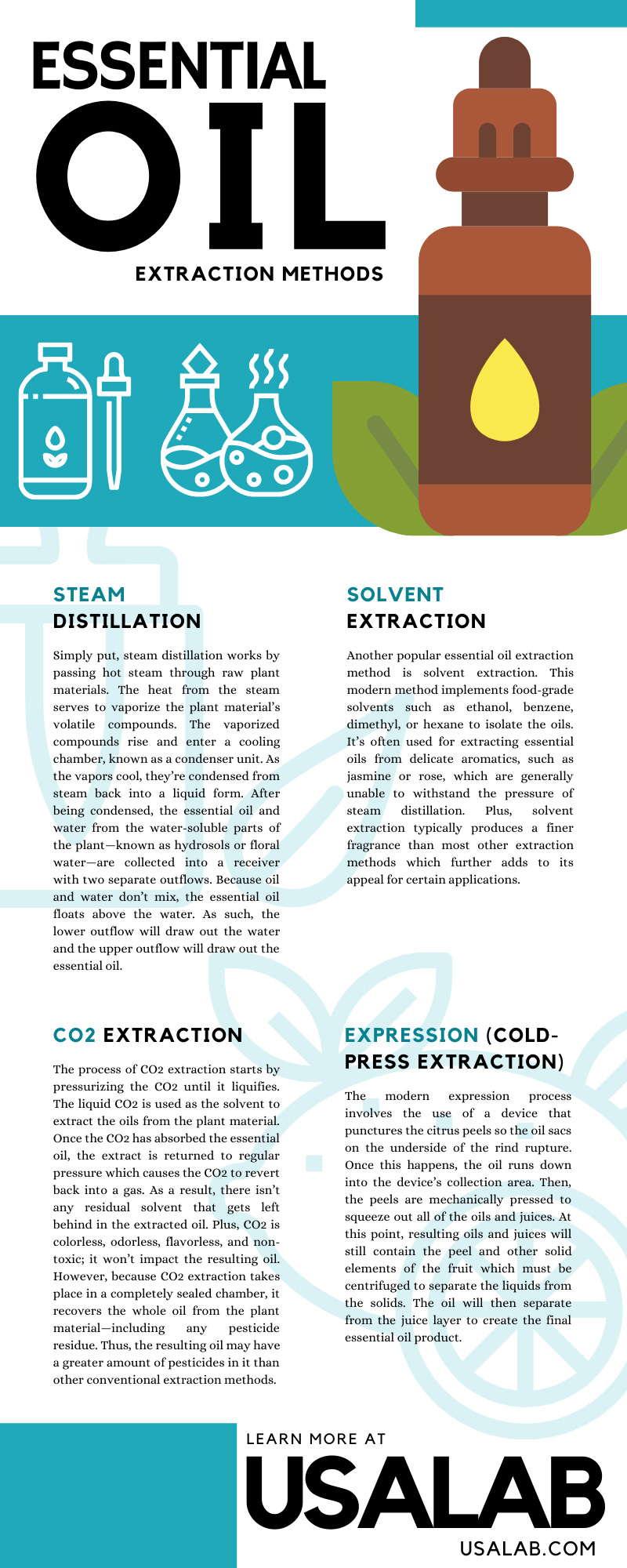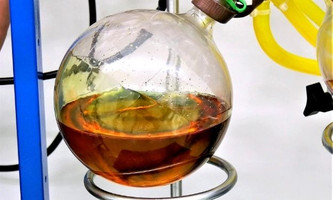Methods of Extracting Volatile Oils
Dec 4th 2020
Essential oils are types of oils that capture the scent, flavor, or essence of a plant. For thousands of years, they’ve been widely used for a broad range of applications—from medicinal purposes to cosmetic use. In order to create an essential oil, the plant’s active botanical constituents must be extracted from a plant.
There are a wide variety of different essential oil extraction methods used to obtain the oil. Each method applies different amounts of temperature and pressure, which ultimately impacts the quality of the resulting essential oil. Depending on the essential oil being created, some essential oil extraction methods are better suited to certain plant types and parts.
If you’re interested in producing your own essential oils, it’s important to be familiar with the various extraction methods in order to determine which is best for your application. To learn more about methods of extracting volatile oils, continue reading this helpful guide.
Steam Distillation
Steam distillation is the most commonly implemented method of essential oil extraction. Simply put, steam distillation of essential oils works by passing hot steam through raw plant materials. The heat from the steam serves to vaporize the plant material’s volatile compounds. The vaporized compounds rise and enter a cooling chamber, known as a condenser unit. As the vapors cool, they’re condensed from steam back into a liquid form.
After being condensed, the essential oil and water from the water-soluble parts of the plant—known as hydrosols or floral water—are collected into a receiver with two separate outflows. Because oil and water don’t mix, the essential oil floats above the water. As such, the lower outflow will draw out the water and the upper outflow will draw out the essential oil.
Part of the reason why steam distillation is such a popular process of extracting essential oils is because the volatile compounds can be distilled at temperatures that are lower than their boiling points. As such, the natural qualities of the plant material are less likely to become altered or diminished during the process. For this reason, essential oil distillation is often regarded as the only extraction method that allows for purity.
Solvent Extraction
Another popular essential oil extraction method is solvent extraction. This modern method implements food-grade solvents such as ethanol, benzene, dimethyl, or hexane to isolate the oils. It’s often used for extracting essential oils from delicate aromatics, such as jasmine or rose, which are generally unable to withstand the pressure of steam distillation. Plus, solvent extraction typically produces a finer fragrance than most other extraction methods which further adds to its appeal for certain applications.
During essential oil extraction, the plant materials are covered by a solvent and dissolved into it. Once the solvent absorbs the essential oil, the resulting extract is evaporated so only the plant oil is left behind. Technically, the remaining oil is known as an absolute, not an essential oil. An absolute is a highly concentrated aromatic substance which closely resembles the plant’s natural aroma. Additionally, it has a more vivid color than an essential oil. As such, solvent extraction is often used to create extracts for perfume or cosmetic applications. The main downside to this type of extraction method is a risk that trace amounts of the solvent may not get fully evaporated. As such, small quantities of harsh chemicals may remain in the final absolute which could cause irritation when used.
CO2 Extraction
CO2 extraction is a type of essential oil extraction that uses carbon dioxide as the solvent. Unlike traditional solvent extraction, however, no residue is left behind which generally makes the resulting oils purer and safer for use.
The process of CO2 extraction starts by pressurizing the CO2 until it liquifies. The liquid CO2 is used as the solvent to extract the oils from the plant material. Once the CO2 has absorbed the essential oil, the extract is returned to regular pressure which causes the CO2 to revert back into a gas. As a result, there isn’t any residual solvent that gets left behind in the extracted oil. Plus, CO2 is colorless, odorless, flavorless, and non-toxic; it won’t impact the resulting oil. However, because CO2 extraction takes place in a completely sealed chamber, it recovers the whole oil from the plant material—including any pesticide residue. Thus, the resulting oil may have a greater amount of pesticides in it than other conventional extraction methods.
Expression (Cold-Press Extraction)
Expression, or cold-press extraction, is typically used for isolating oils from citrus peels. This ancient essential oil extraction process originally involved soaking citrus peels in warm water and then hand-squeezing them with a sponge until the oil glands burst. Once the oil was released, it was collected in the sponge and squeezed into a collection container where the juice and oils would separate overtime. Today, the process of expression is a bit more technical and involves the use of machinery.
The modern expression process involves the use of a device that punctures the citrus peels so the oil sacs on the underside of the rind rupture. Once this happens, the oil runs down into the device’s collection area. Then, the peels are mechanically pressed to squeeze out all of the oils and juices. At this point, resulting oils and juices will still contain the peel and other solid elements of the fruit which must be centrifuged to separate the liquids from the solids. The oil will then separate from the juice layer to create the final essential oil product.
If you’re interested in essential oil distillation, USA Lab Equipment has a wide array of equipment options to help you get started. Our extensive inventory includes distillation systems, solvents, centrifuges, and laboratory refrigerators to store your products. For the past decade, we’ve worked hard to provide top quality, new and used laboratory equipment at competitive prices. Additionally, we offer exceptional customer service. To learn more about how our equipment can help you start, expand, or enhance your essential oil business, contact us today.


